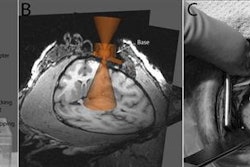Thursday, December 1 | 11:00 a.m.-11:10 a.m. | SSQ05-04 | Room S405AB
This presentation will cover the need for C-spine MRI exams in acute trauma patients, and U.S. researchers will explain how understanding the frequency of findings can help radiologists guide ordering physicians as to the modality's appropriate use.MRI scans of the cervical spine have become ingrained in routine imaging for selected indications in many trauma centers, noted Dr. Marlen Pajcini, a resident physician at Santa Clara Valley Medical Center in San Jose, CA, and colleagues. Given the expense and complex operational requirements of the modality, verifying its efficacy is paramount.
This two-year retrospective review of 241 consecutive C-spine MRI studies looked for the presence of a variety of conditions. Ligament injury was the most common indication (43%), followed by soft-tissue/muscle injury (29%), marrow/disk injury (28%), spinal cord injury (17%), and vascular injury (12%). Approximately one-third of the studies were negative for acute findings or showed only abnormalities already seen on previous MRI scans.
"This indicates that in the majority of trauma patients for which a C-spine MR study is ordered, an acute finding is generally present," the group wrote, adding that the results "validate the general concept of the use of MR in acutely injured patients who demonstrate neurologic deficit or cannot be assessed clinically."


.fFmgij6Hin.png?auto=compress%2Cformat&fit=crop&h=100&q=70&w=100)





.fFmgij6Hin.png?auto=compress%2Cformat&fit=crop&h=167&q=70&w=250)











